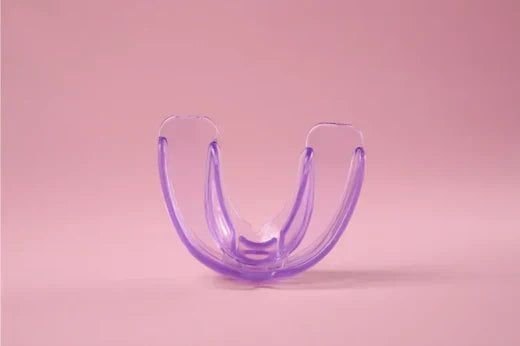
Table of contents
- Why You Need a Properly Fitted Mouth Guard
- Types of Mouth Guards Suitable for the Boiling Method
- Approach to Creating a Mouth Guard from Boiling Method
- Step : Read the Instructions
- Step : Prepare the Water
- Step : Submerge the Mouth Guard
- Step : Remove and Cool Briefly
- Step : Position the Mouth Guard in Your Mouth
- Step : Bite Down and Press
- Step : Cool in Cold Water
- Step : Test the Fit
- Troubleshooting Common Issues
- Maintaining Your Mouth Guard
- Why Choose a Boil-and-Bite Mouth Guard?
- Final Thoughts
- FAQs
Mouth guards play a vital role in protecting your smile during close contact sports and other physical activities. But the fit may not be the best at times. To tackle this, many users adopt techniques such as boiling. But does this actually work? And if not, what are some other ways to ensure your mouth guard fits well? To answer these questions, we’ll walk you through everything you need to know about how to fit a mouth guard using the boiling method.
Why You Need a Properly Fitted Mouth Guard
Mouth guards play a critical role in preventing dental injuries. A poorly fitted mouth guard can cause discomfort, reduced protection, and difficulties in breathing or speaking. Through the boiling technique, it is possible to guarantee that your mouth guard conforms correctly to the individual shapes of your teeth, thus providing the highest level of comfort and protection.
Types of Mouth Guards Suitable for the Boiling Method
Not all mouth guards are designed to be boiled. The boiling process is most effective in the case of thermoplastic mouth guards, or "boil-and-bite" mouth guards. These are made from a material that softens in hot water, allowing it to mold around your teeth when bitten into.
You’ll typically find these types of mouth guards in sports stores or online. They are inexpensive, customizable, and have good protection when worn correctly.
Required Tools
Before starting the boiling process, gather the following materials:
- A boil-and-bite mouth guard
- A pot of water
- A stove or kettle to heat the water
- A timer or clock
- Tongs or a slotted spoon for handling the mouth guard
- A bowl of cold water
- A mirror for precision fitting
Approach to Creating a Mouth Guard from Boiling Method

Here’s the ultimate step-by-step boiling guide for fitting your mouth guard:
Step 1: Read the Instructions
Different boil-and-bite mouth guard brands have their own boiling and fitting procedures. Before proceeding, carefully read the manufacturer’s guidelines included with your product to avoid mistakes.
Step 2: Prepare the Water
Fill a pot with water and bring water to a boil on the stove. When the water reaches the boiling point, take it off the heat source. Allow it to cool for about 30 seconds to 1 minute to prevent overheating the mouth guard, which can damage its structure.
Tip: There are a few brands that claim to give a precise temperature range, so a thermometer should be used if necessary to stay accurate.
Step 3: Submerge the Mouth Guard
Place the mouth guard in the hot water, by using tongs or a slotted spoon. Let it soak for the recommended time, usually between 30 and 60 seconds. The material will soften, becoming pliable for molding. Do not leave it in too long or it will become over-softened and lose its structure.
Step 4: Remove and Cool Briefly
Carefully withdraw the mouth guard from the water using the tongs or spoon. Allow it to cool for 5–10 seconds so it’s not too hot for your mouth.
Safety Tip: Do not skip this stage, as it is important to let the mouth guard cool down before putting it in your mouth to prevent burning your mouth.
Step 5: Position the Mouth Guard in Your Mouth
After the mouth guard has sufficiently cooled, fit it into your mouth in position over the upper teeth (or the lower teeth, if made for the lower pharyngeal part). Ensure it’s centered and fully covers your teeth.
Step 6: Bite Down and Press
Close your mouth gently, and bite into the mouth guard with firm pressure to produce an impression of your teeth. Bring the mouth guard up to your gums and teeth and shape it into the contours of your mouth by finger pressure.
Pro Tip: Close the mouth guard with your tongue to get a seal on the inside of the mouth guard.
Step 7: Cool in Cold Water
Take the mouth guard from your mouth and put it in a bowl of ice water. This is used to set the shape, which gives the mouth guard rigidity and strength. Let it sit for about 30 seconds.
Step 8: Test the Fit
Once cooled, test the mouth guard by putting it back in your mouth. It should be grippy and secure without ever sliding or being uncomfortable. If it doesn’t fit correctly, repeat the boiling and molding process until the desired fit is achieved.
Note: Don’t boil the mouth guard too many times, as repeated heating can degrade its material.
Troubleshooting Common Issues
- Mouth Guard Feels Too Tight or Loose: If the fit is too tight, you may need to remold it with slightly less pressure. For a loose fit, it is desirable to give the molded part somewhat more firm compression.
- Mouth Guard Doesn’t Cover All Teeth: Ensure the mouth guard is centered in your mouth before biting down.
- Difficulty Breathing or Speaking: Trim any excess material with scissors to reduce bulk. However, beware of impairing protection too much by removing too much.
Maintaining Your Mouth Guard
A well-maintained mouth guard lasts longer and ensures continued protection. Here’s how to care for it:
- Clean Regularly: Rinse your mouth guard with cold water after each use. Clean with a toothbrush and mild soap in addition.
- Avoid High Temperatures: Do not expose your mouth guard to the heat of the sun or a car, as it will warp.
- Store Properly: Store your mouth guard in a loose, vented case, which will inhibit bacterial proliferation.
- Replace When Necessary: After using mouth guards for a long time, they may get degraded through wear and tear, or become misshaped. Therefore it is important to replace yours if it becomes damaged or uncomfortable.
Why Choose a Boil-and-Bite Mouth Guard?
Boil-and-bite mouth guards achieve the right balance between low pricing and personalization. In comparison with pre-molded stock mouth guards, which might not fit properly, boil-and-bite alternatives provide a customized fit, which leads to better comfort and protection. Custom-made mouth guards from a dentist offer better fit and protection but are much more costly.
Final Thoughts
The ability to adjust the fit of a mouth guard through boiling is a simple and effective way to achieve the best protection for the teeth during sports or any other activity. By following this guide, you will be able to aim for a secure and comfortable fit that doesn't slide around during intense action.
Properly cared for and maintained, your boil-and-bite mouth guard can give you confidence knowing it is there for you when you need it.
Whatever your level, a properly fitted mouth guard is a must for protecting your teeth, whether you're years into the game or just getting started. Get your boil-and-bite mouth guard today and put to work the new skills you've learned.
FAQs
1. How long should I leave my mouth guard in boiling water?
The exact time depends on the manufacturer's instructions, but typically it ranges between 30 and 60 seconds. If it sits in for too long, it softens beyond its best and loses its form, so it is important to always adhere to the instructions supplied with the product
2. If the mouth guard is not a good fit right away, what should I do?
If the mouth guard is too tight, too loose, or uncomfortable, the boiling and molding process can be repeated. Do not overheat the mouth guard many times because it will make the material weaker. Furthermoret, adjust molding pressure at the time of mold formation.
3. Can I wear a boil-and-bite mouth guard with braces?
Yes, there are boil-and-bite mouth guards that are purposefully built for braces wearers. Search for orthodontic mouth guards with a wider space to adjust the brackets and wires.
4. How do I know when it’s time to replace my mouth guard?
You should replace your mouth guard if it gets disfigured, loses its form, or is no longer a snug fit. Besides, after examining damage and wear and tear, or when the device isn't comfortable, the user should replace it. Mouth guards are typically replaced every 6 to 12 months depending on use.
5. Can I clean my mouth guard with hot water or toothpaste?
No, do not use hot water or toothpaste to clean your mouth guard, as they can damage the material. Rinsing it with cold water after each use and cleaning it with mild soap and a soft toothbrush occasionally is also okay. Store it in a ventilated case to be hygienic.




